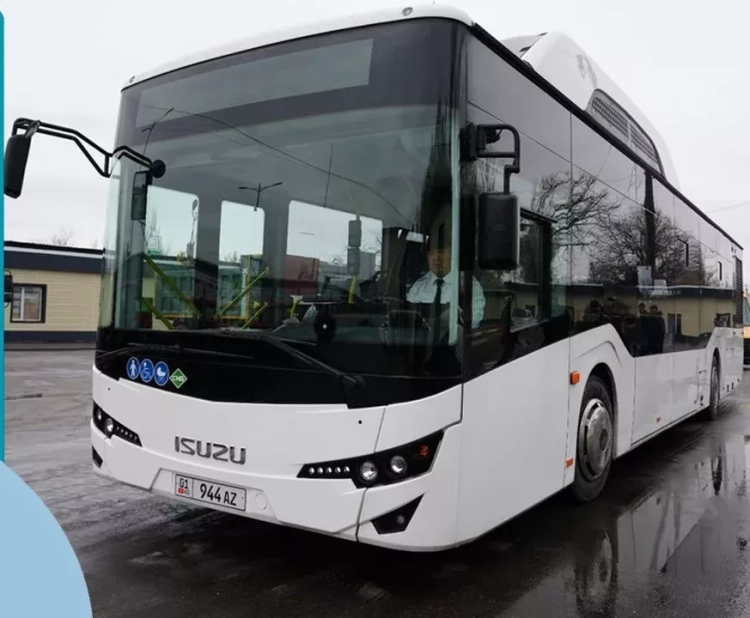STONE STREET - IT APPEARED ON A WASTELAND
50th Anniversary of October Street was previously called Stone Street and then Yaroslavskaya until 1967. It emerged in the post-war years on a stony site. Hence its first name. It stretches from the Ala-Medin River in the east to Chapayev Street in the west. Straight as a string, it is built up with both individual and multi-story houses.
Multi-story construction particularly expanded from the 1960s and is mainly concentrated between Zhukeev-Pudovkin and Ordzhonikidze Streets. The first building on the stony wasteland was Secondary School No. 60, which appeared in 1962 and is now known for housing the museum of Czechoslovak national hero Julius Fucik for several years. This street is truly student-oriented. Within a small section of it, there are two higher educational institutions.
In 1963, a new four-story building of the Kyrgyz Medical Institute (architect E. Pisarskaya) rose at the corner of Soviet Street, where 5,355 students (as of October 1, 1989) study in 60 departments, with more than 680 faculty members, many of whom are graduates of this institute. Among them are 2 academicians and 1 corresponding member, 382 candidates of sciences, 39 professors, and 115 associate professors, 44 doctors. The following year, in 1964, the building of the Institute of Physical Culture (architect E. Pisarskaya) was completed. The institute was established in 1955. As of October 1, 1989, about 1,914 students (full-time and part-time) study in its 19 departments. Over the years, more than 6,000 people have been trained at the institute, including 16 international-class masters, more than 40 masters of sports of the USSR, and about 80 candidates for master of sports. The street is also rich in research institutions.
At the corner of Zhukeev-Pudovkin Street, there are the buildings of the Institute of Oncology and Radiology and the Institute of Tuberculosis, while at the corner of Krasnooktyabrskaya Street, the Kyrgyz Scientific Research Department of Energy and the Institute of Seismology of the Academy of Sciences of the Kyrgyz SSR operate in a four-story building. The street also houses a city telephone network station, a branch of the ambulance station, a dental clinic, etc.
A notable feature of the street is Friendship Park. It attracts visitors with its beautiful trees, flowering shrubs, and fresh air filled with the scent of greenery. It was previously called "Youth Park."
It was established on a stony wasteland at the initiative of the director of the Botanical Garden, corresponding member of the Academy of Sciences of the Kyrgyz SSR E. Z. Gareev in 1957, covering an area of 20 hectares. In 1962, the forest park was transferred to the jurisdiction of the Frunze City Executive Committee, and in 1967 it received its current name.
The central alley is lined with rows of coniferous trees - juniper and biota; outside, the rows of trees are bordered by a living hedge. The side alleys are planted with linden, birch, and maple. The park is home to 40 species and forms of trees and 35 species of shrubs, including 5 species of conifers. There are flowers in the flowerbeds along the central alley.
The park features various attractions, and the Czechoslovak "Luna Park" also visits.
In the center of the park, against the backdrop of a green mass of trees, the café "Bermet" is built from split granite. Friendship Park is a favorite recreation spot for residents of the nearby neighborhoods.
In 1964, an additional plot of 130 hectares was allocated to the Botanical Garden. The former stony wasteland beyond the Ala-Medin River has turned into a wonderful green corner. On an area of 45 hectares, trees and shrubs from 38 genera and 1,200 species have been planted. There are also reproduction and introduction nurseries, as well as a rose garden. The southern part of the Botanical Garden features a fruit orchard of hybrid forms. The main entrance is from the southern side of the street. The new Botanical Garden is one of the largest in Central Asia. On the western part of the street, on both sides, lies the "Mirny" microdistrict, predominantly built with four- to five-story houses.
It should be noted that along the entire length of the street, the roadway and sidewalks are paved with asphalt, and young tree plantings are developing. There is intense vehicular traffic, and some trolleybus routes leading to various microdistricts run along it.
Losev D. S., Kochkunov A. S. What the Streets Tell
Streets of Bishkek

















































